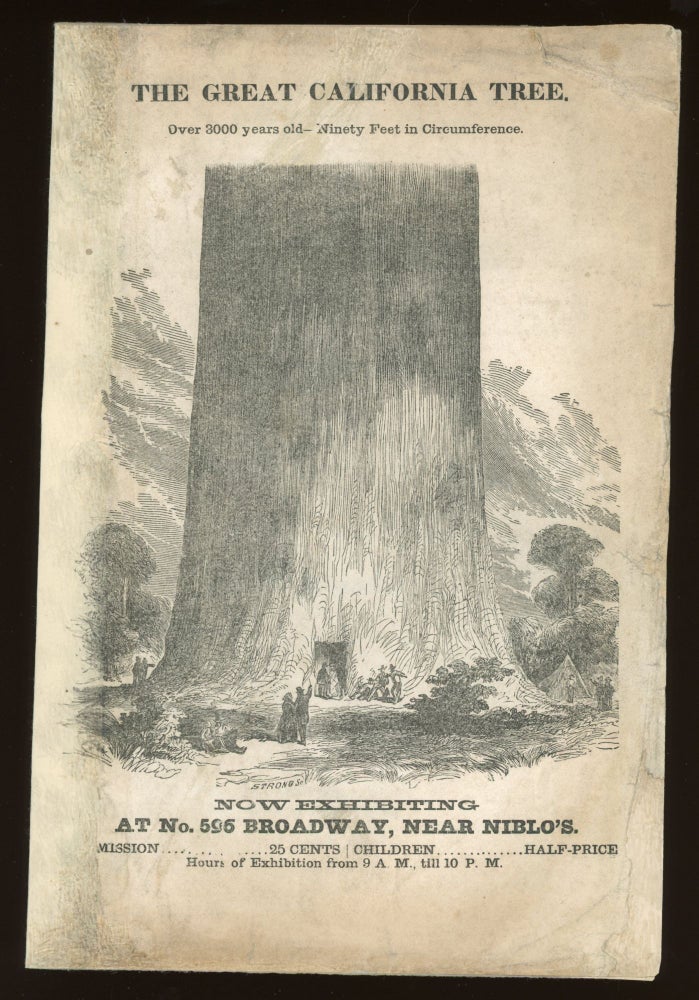Description of the great tree recently felled upon the Sierra Nevada, California, now placed for public exhibition, in the spacious Racket Court of the Union Club, No. 596 Broadway, adjoining the Metropolitan Hotel, New-York. New York: Herald Job Printing Office, 1854. 24 cm, pp. [1-4] 5-8, 1 illustration (on front cover), self wrappers. First edition. Cover title reads: "The Great California Tree. Over 3000 Years Old-Ninety Feet in Circumference ..." In 1853 Captain W. H. Hanford conceived the idea of placing a Sierra Nevada big tree (Sequoiadendron giganteum) on public display. Accordingly a large tree in the Calaveras Grove was bored down, sections cut out, and some bark stripped off the fallen trunk. The bark from this "vegetable monster" was exhibited in San Francisco and later in New York. According to Farquhar (1948), title 2, this pamphlet "appears to be the first publication exclusive of newspapers and periodicals devoted to the big tree of California." For an account of Hanford's venture see Kruska (1985), pp. 18-32. A rival exhibition of a coastal redwood (Sequoia sempervirens) was displayed concurrently in the New York Crystal Palace by showman P. T. Barnum. For his brief exhibit Barnum prepared a pamphlet, Description of the Great California Tree (New York 1854), which borrowed freely from Hanford's booklet, as well as a broadside "Wonderful California Curiosities! The Mammoth Tree from California! ... 472 Broadway ..." See Kruska (1985) pp. 23-31 for an account of these rival exhibits. Removed, washed and de-acidified, old paper tape removed, tears closed, gutter margins restored. Formerly, the Francis P. Farquhar copy with the former cloth bind-up preserved (the front free endpaper and leaf at rear have the Bancroft Library's withdrawn stamp and Farquhar's penciled notes, all of which establish the provenance of this copy). One of five known copies, and an important one. Enclosed in a custom cloth slipcase with leather spine label. (#155761).
No statement of printing.


